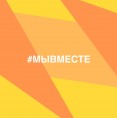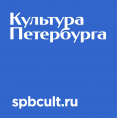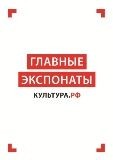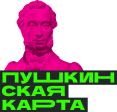- Главная страница
- -Visit us
- -Exhibitions
The Russian Revolution 1917-1922
Description
The first section of the museum exposition devoted to the history of the Russian revolution of the period from 1917 to 1922 depicts the circumstances, which led to the fall of the monarchic power in Russia in March 1917, and describes the attempt to form a new democratic state system.
The mass demonstration caused by shortage of bread, which had begun on February 23, 1917 in Petrograd, developed within few days into the real uprising and ended with the abdication of Emperor Nicholas II.
This hall’s exposition culminates by the set of materials devoted to the solemn ceremony of the burial of the February revolution victims in the Marsovo Pole (Field of Mars) in Petrograd on 23-th of March 1917, which was attended by about a million people. The fall of monarchy was enthusiastically welcomed by the majority of the Russian population, though this became only the beginning of a promptly developing revolutionary process and a deepening socio-political crisis in the country. The hall has a dominant in the form of the symbolical figure of a soldier reminding that Russia entered the revolution, when being at war, and the Petrograd garrison soldiers, mostly “peasants in soldier’s coats”, became the momentum of the February uprising. The soldier P. I. Slesarev’s letters home from Petrograd exhibited here help to go into the atmosphere of those days more deeply.
The next sections of the permanent exposition “The Russian Revolution 1917-1922” are devoted to the October coup events and the Civil war which broke out in the territory of the former Russian Empire.
In the summer of 1917, Russia was in a stretching situation: collapsing economy, string of political crises, subversion in the army and defeats at the front. The provisional government led by its Minister-Chairman A.F. Kerensky lost the control over the country. The new Supreme Commander-in-Chief General L.G. Kornilov proposed to Kerensky to stop the rot in Petrograd by joint efforts. However, Kerensky’s concerns about that General would dispossess him of his absolute power, forced him to confront Kornilov. The events of the late August 1917, gone down in history as “Kornilov Affair”, brought the country to the next political crisis, weakened even without that precarious position of the Provisional government and allowed the left-wing radical political forces to strengthen significantly their positions in the capital. In the autumn of 1917, the Bolsheviks had begun actively preparations for the military takeover which they staged in Petrograd from 24 to 26 October. The provisional government was deposed, its ministers were arrested, and Kerensky had the time to leave the capital. The Bolsheviks formed their own government – the Council of People's Commissars, suppressed the armed rebelions and proceeded to the creation of a type of state that was new in the world history - Republic of Soviets.
Formally, the new government had been provisional also until the All-Russian Constituent Assembly was convoked. Lenin and his fellows in arms could not refuse from its convocation at once. But they dismissed the Constituent Assembly just after its first session on January 6, 1918, having unambiguously shown to their political contenders and all population of Russia that they had taken authority seriously and were not about to give it back without struggle.
The Treaty of Brest-Litovsk signed by the Soviet government with Germany in March 1918 caused also discontent of the patriotically-minded part of the Russian population, since according to this treaty the country was losing the large territories and should pay a huge contribution.
All these events became stages leading to the extensive Civil war which broke out in the territory of Russia in the Summer of 1918.
The exposition depicting the development of the Russian revolution from the second half of 1917 to the beginning of 1918 contains unique original things of the participants of the Kornilov rebellion and October coup, as well photographs, leaflets and other documents illustrating the events of the Russian history of the specified period.
The documentary film on that time allows to see the basic characters of those stretching days - L.G. Kornilov, A.F. Kerensky, L.D. Trotsky, as well as to watch the events in Petrograd on the Constituent Assembly’s opening day.
The prologue of the hall devoted to the Russian Civil war history shows the generalized way of life of the ordinary people who took on the main severities of that terrible time. The special space is provided for the audiovisual program “Civil War in Russia. Diaries and Memories”, which allows to appreciate and experience various aspects of the Civil war tragedy in a much brighter and much more emotional way.
All major contenders for power in Russia, who turned the country to a battle-field - parties of the Bolsheviks, “revolutionary democracy” and the White movement, which the foreign military intervention had significantly contributed to, are represented here by their program documents, leaflets, propaganda posters, photographs of leaders and ordinary participants of the events. The rare stock footage make possible to see the well-known figures of both red and white movements, to get to know the daily life in the territories under their control.
A separate set of documentary, photographic and consumer goods is devoted to the insurrectionary peasant movement, so-called “the green”. The peasantry constituted a majority of the Russian population and the outcome of Civil war depended mostly on its position.
Also, the attention is paid to the events which took place in the specified period of time in the national regions of Russia. The October coup induced the process of declarations of the national state entities, the most of which counteracted the central power of the Soviets. The Baltics, Ukraine, Transcaucasia, and Central Asia saw complicated political processes associated with armed struggle, in which, in addition to national forces, both the Bolsheviks and representatives of the “revolutionary democracy” and White movement supporters took their part.
The special role in the exposition belongs to the set of the exhibits depicting the Kronstadt insurrection in March of 1921. This revolt forced V.I.Lenin to come to terms with the peasant majority of the country and to announce the New economic policy.
The Civil war final in 1922, as well as a final part of our exposition, culminates with the appearance of the new state - the Union of the Soviet Socialist Republics (USSR) - on the world map and forced emigration of more than two million of Russia’s residents from their homeland.














